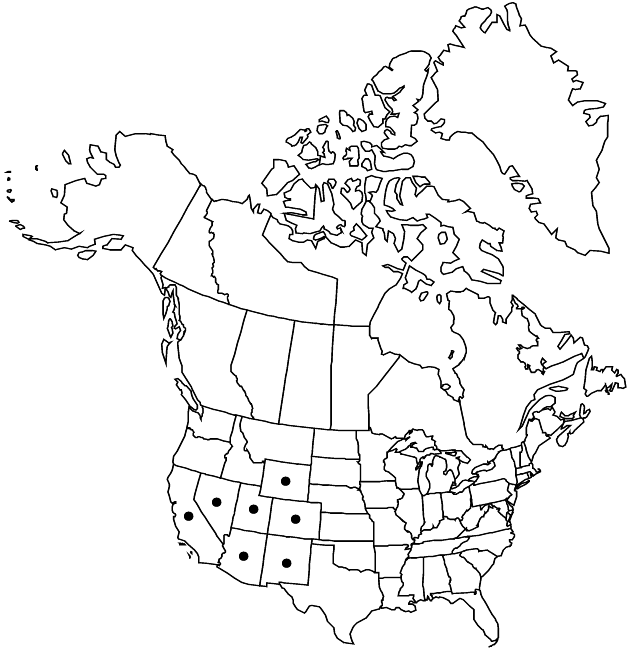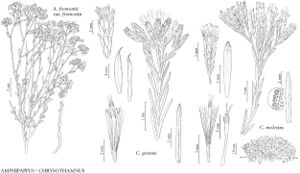Chrysothamnus greenei
Erythea 3: 94. 1895.
Shrubs, 10–50 cm; with woody, moderately branched caudices, bark light gray, flaky to fibrous with age. Stems ascending, green becoming tan, glabrous, resinous. Leaves ascending to spreading; sessile; blades with faint midnerves, linear-filiform, 10–40 × 0.5–2 mm, flat or sulcate, sometimes twisted, margins glabrous or hirtellous, apices acute to apiculate, faces glabrous. Heads in densely cymiform arrays (4 cm wide), distal leaves reaching into but not overtopping arrays. Involucres cylindric to turbinate, 5–8 × 1.5–2.5 mm. Phyllaries 15–20 in 3–4 series, often in vertical ranks or spirals, mostly tan, ± greenish apically, midveins rarely visible, ovate or oblong to elliptic, 1.5–5 × 0.8–1.4 mm, unequal, mostly chartaceous, sometimes ± keeled, apices acuminate to cuspidate (cusp often recurved or falcate), faces glabrous or with a few long, crooked hairs proximally and near margins, resinous. Disc-florets 4–5; corollas 3.7–5.5 mm, lobes 0.8–1.5 mm; style-branches 2–2.4 mm (exserted beyond spreading corolla lobes), appendages 0.5–0.8 mm (shorter than stigmatic portion). Cypselae reddish-brown, turbinate, 3–4 mm, faces densely hairy; pappi tan, 3.7–5 mm. 2n = 18.
Phenology: Flowering summer–fall.
Habitat: Sandy washes, dry open places in desert
Elevation: 1300–2000 m
Distribution

Ariz., Calif., Colo., Nev., N.Mex., Utah, Wyo.
Discussion
Selected References
None.
